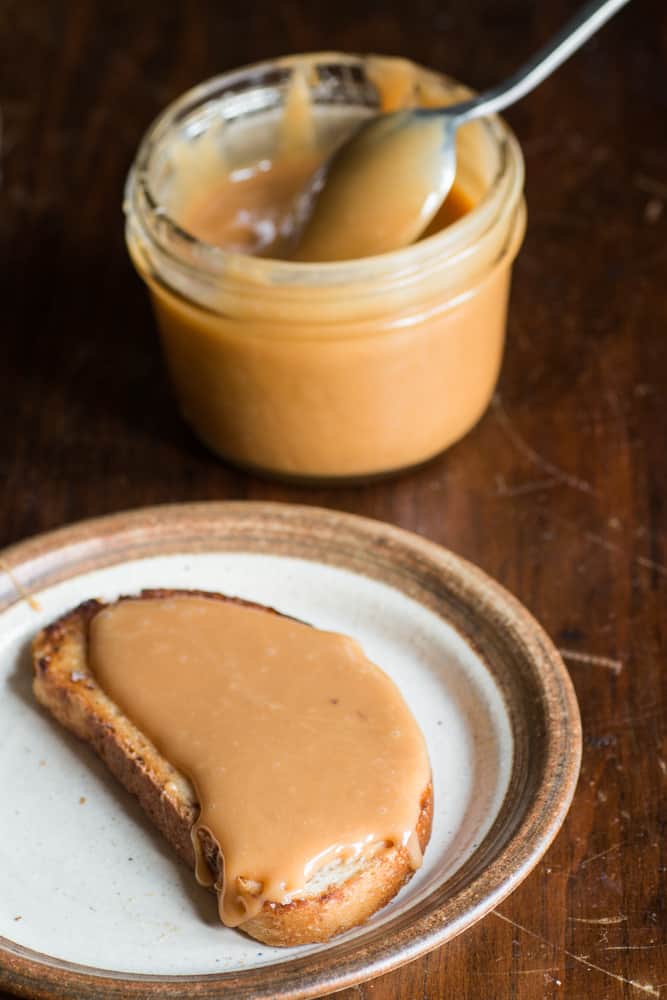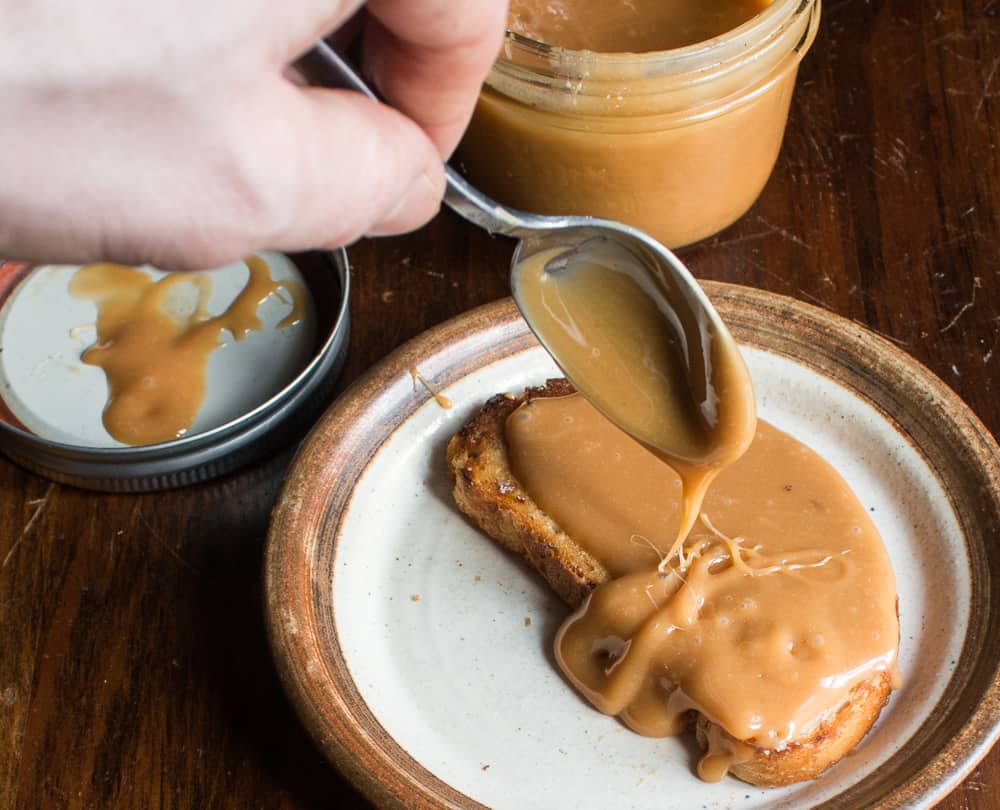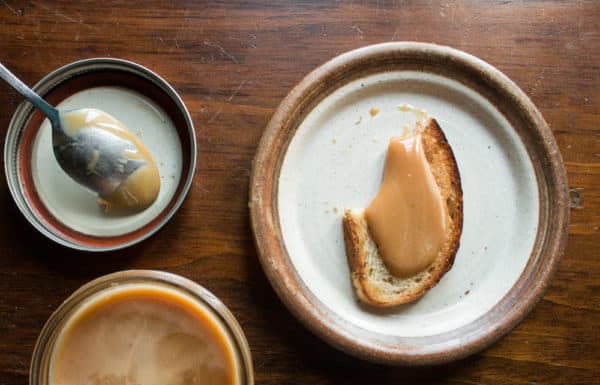If you're in a kitchen, either in a restaurant or at home, you will, without a doubt, eventually peer into a cooler with a bunch of expired milk at some point in time. I used to have about 50 gallons a month to worry about, and when some would go past the date, be it whole milk, cream, half and half, or whatever, everybody went into the pot to make milk jam.

Most people have heard of dulce de leche, and I learned about it from a sous chef I had from Argentina, where it’s used to make all kinds of things. The more I researched it, the more fascinated I got, it seemed that every country in South America has a different way of preparing it, some using sour milk, some omitting the baking soda that prevents the crystallization of the sugar to keep it spreadable.
What a lot of people don’t know is that cooking milk with sugar is common in a bunch of cultures, including France where it’s called confit de lait or milk jam (Alain Ducasse shares a French recipe in Ducasse Flavors of France). I've also found recipes in Russian, Polish, and of course, the aforementioned South America, where it's arguably the most well known.
A trick to preserve excess dairy, near indefinitely

More than anything, though, I've used the process of cooking milk with sugar as a preservative, space-saving technique. The heat of cooking pastuerizes the milk, while the sugar functions as a stabalizing preservative. After cooking and reducing, the milk jam will stay good near indefinitely in the fridge, and once you take it out and let it get to room temperature, it will loosen up, and return to a spreadable, ooey-gooey state. It takes a little time and some careful watching at the end, but the result is a sweet concoction that would make a shoe taste good.
My favorite method is using goat milk, or the South American version called cajeta, a Mexican specialty. The goat milk gives a subtle tang to the jam that’s deeper than cows milk. That being said, most of the time I've used this to help get rid of excess dairy and reclaim freezer space, so yes, you can definitely make this with whatever dairy, or combinations you have laying around. I used to just dump all the old cream, half and half, milk, etc, together and let it ride.
As far as uses, some of my go-to’s are using it as cookie filling, (common in Russia and Argentina), slathering it on toast for brunch, drizzling over ice cream, and spinning it into a stupidly rich caramel ice cream. It's also amazing as a crepe filling, traditionally in "panqueques", or crepes filled with dulce de leche. And, if you're wondering, yes, panqueque is definitely a cognate for pancake. Remember this stuff the next time you have some old milk!
Goat Milk Jam / Cajeta
Ingredients
- 4 cups goat milk or assorted leftover dairy
- 1.5 cups sugar
- ½ inch piece of cinnamon stick
- 1 teaspoon of vanilla extract or half a vanilla bean, split
- Pinch of salt
- ⅛ teaspoon baking soda
Instructions
- Combine all the ingredients and bring to a simmer, whisking occasionally to clean up any stuck on particles on the bottom and sides of the pan.
- Continue cooking slowly, whisking occasionally, until the mixture is thick like warm honey, and is a deep caramel color, roughly 1.5 hours. Transfer the liquid to a pint mason jar or another container and refrigerate until needed.
- Under refrigeration, the mixture will thicken and become very hard. To loosen it up, it just needs to come to room temperature, which you could do with a microwave or just by letting it sit out for a while.




Nerissa
Refrigerate it back after microwave it, won’t spoil the product I hope?So it can be reheated indefinitely.
Alan Bergo
Pretty much. Cajeta is basically cooked down, ultra-pastuerized milk and sugar. It's quite stable. It won't last forever, but I've had it last for months.
Louise
I have always felt bad tossing slightly funky milk. Thanks, Alan. I will make and love this,
Alan Bergo
I've never made this with milk that has soured, but I know it has been done. Let me know how it turns out if you try it.
Joanne Burnett
I am so glad to learn you can save milk that is past it's prime so to speak. I don't like to throw away food. I have had good luck with the recipes of yours that I have tried.
Alan Bergo
Yeah this is a fun one, and it's saved me from throwing away hundreds of gallons of milk over the years.
Judy Krohn
Will this recipe work with regular cow's milk?
Alan Bergo
Yes, of course. Cream, half and half, regular milk, whatever milk/dairy combos you have on hand will work.